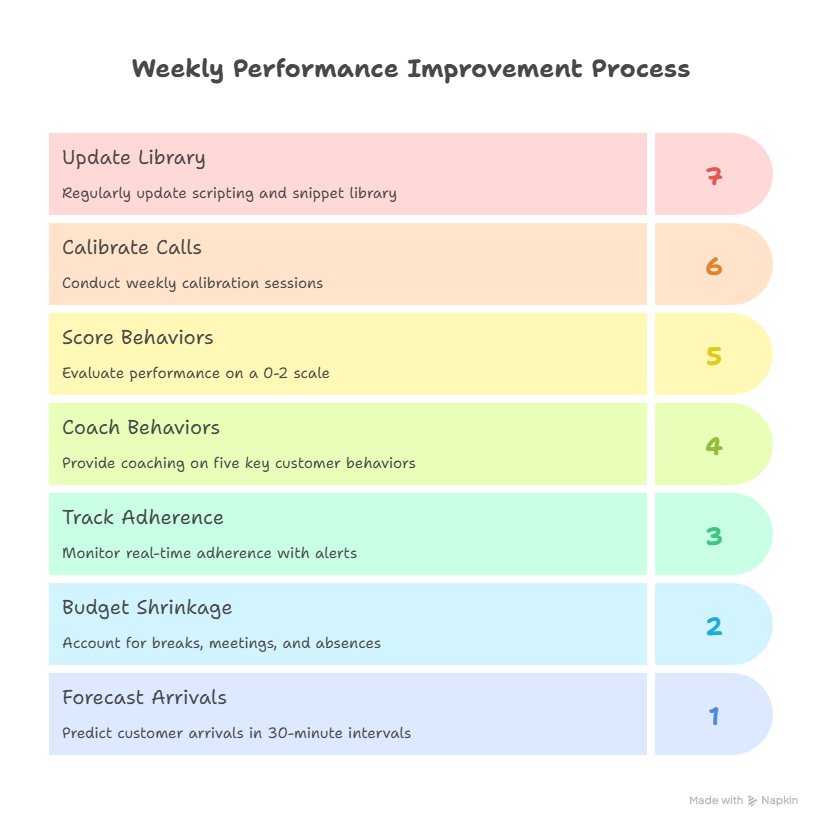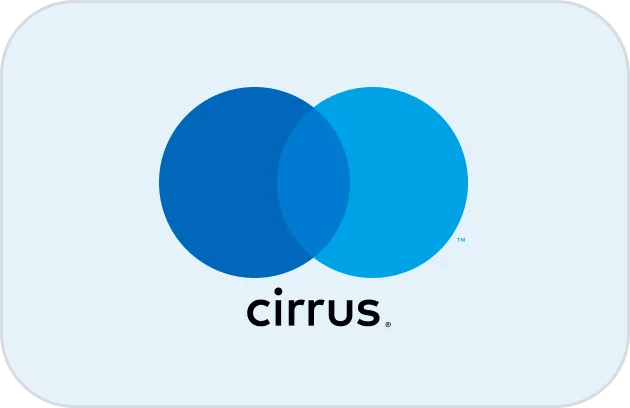If you’re done apologizing for outages, you don’t need another vendor demo — you need reliability you can bet a quarter on. Cloud call center software should keep your lines open, your queues under control, and your reporting clean enough to run the business by numbers, not hunches. This guide breaks down the architecture, routing, coaching, analytics, and compliance moves that eliminate downtime anxiety and transform a call center into a predictable, revenue-producing engine — the exact playbook platforms like ActiveCalls are built around.
1) The Downtime Tax — And How To Zero It Out
Every “five minutes down” compounds: missed orders, churned subscribers, chargebacks, SLA penalties, lost sales meetings, and agent morale damage. The hidden cost is operational slack — the extra staffing you carry “just in case.” Kill the downtime tax and you immediately reclaim budget, leadership focus, and customer trust.
Outages fall into four buckets: carrier failure (regional telco wobble), platform failure (PBX, SBC, or database incident), access failure (VPN, SSO, browser/device), and process failure (change management, slow rollback, unclear ownership). Your software choice should neutralize all four with layered safeguards you don’t have to think about daily.
Non-negotiables if you’re serious about uptime
- Active-active edges across regions with health-checked failover measured in seconds, not war-room hours.
- Carrier diversity with automatic route re-selection (SIP OPTIONS, health probes, dynamic routing).
- Session resilience for real agents on real networks (mobile hotspots, ISP hiccups, roaming laptops).
- Change discipline: staged deploys, rollback buttons, feature flags, and postmortems that change checklists.
- Transparent telemetry: MOS/jitter/loss and incident comms visible to ops in real time.
2) What “Cloud Call Center” Must Deliver Every Day (Not Just In Sales Slides)
Cloud is not a location; it’s an operating model. The right platform turns brittle infrastructure into replaceable parts you can scale, route, and report on without begging IT for favors. Below is a compact matrix of the daily failure modes you will face, the metric that reveals them early, and the fix that actually holds.
Call Center Fix Matrix — Problem → Metric → Fast Fix (ActiveCalls)
Daily issues you can actually detect and resolve — before they turn into churn.
| Problem | Metric to Watch | Fast Fix (What Works) |
|---|---|---|
| Carrier wobble (regional) | MOS < 3.6 / surge in failed connects | Automatic route re-selection to alternate carriers; geo-aware edges. |
| Browser/device instability | Session drops/reattempts per agent | WebRTC health widget, auto-reconnect, approved device profiles. |
| Abandon spikes | Abandon% by 15–30-min interval | Interval staffing, callback-when-busy, max queue caps. |
| AHT creep | AHT variance by intent/agent | Checklists in-UI, AI summaries, hotkey wrap codes. |
| Low FCR | FCR%, repeats in 7 days | Intent routing + snippet library; weekly calibration. |
| Spam labeling (outbound) | Connect% vs new CLIs | STIR/SHAKEN A, verified number pools, pacing by hour. |
| QA backlog | QA coverage % | Risk-based auto sampling; 5-behavior rubric; AI pre-scores. |
| Supervisor blind spots | % calls monitored; time-to-coach | Live listen + whisper/barge + intent alerts. |
| Missed SLA at peaks | ASA vs interval forecast | Surge schedules; overflow queues; scheduled callbacks. |
| Broken reporting | Non-reproducible metrics | Events model (Start/Connect/Transfer/Wrap/Disposition) to warehouse. |
| Queue hopping/bounce | Transfer% by intent | Skills + intent tags; stickiness with time-boxed fallback. |
| International audio issues | Jitter/loss per region | POP selection; carrier diversity; codec policy. |
| Compliance risk (PCI/HIPAA) | Redaction coverage% / access anomalies | Pause/resume, field redaction, RBAC + immutable logs. |
| Scripting drift | Handle-time spread | Micro-scripts, A/B weekly, embed in UI. |
| After-hours gaps | Service level (night/weekend) | Time-based routing; on-call rings; VM→ticket. |
| Disposition chaos | Code entropy | 12-code set; hotkeys; QA feedback loop to CRM mapping. |
| Cost surprises | Minutes/Seats/Channels by LOB | Department tags + alerts; forecast vs actuals. |
| Migration fear (on-prem → cloud) | Cutover incidents | Two-week pilot → parallel run → wave ports + rollback. |
| Meetings not booked (sales) | Connect→Meeting rate | Preview on high-value; calendar links; post-call SMS. |
| Adherence slips | Adherence%, shrinkage | Real-time adherence alerts; auto status rules. |
| IVR drop-offs | Containment%, drop rate | Two-layer IVR; task-based wording; “0 for agent”. |
| Agent burnout | Attrition%, overtime%, occupancy | Pacing + breaks enforced by schedule; coaching cadence. |
3) Routing That Ends Missed Calls (and Keeps Execs Out of the Queue)
Routing is your throttle. Get it right and customers feel “instant,” agents feel calm, and your finance team sees cost/contact fall while revenue/contact rises. Get it wrong and you create 25-minute waits that no script can recover from. The engine: intent-first IVR, skills-based ACD, priority queues, stickiness with fallbacks, and call-back windows that are real, not “we’ll call sometime.”
Intent-first IVR
Menus represent work types (“Start a new order,” “Check an order,” “Cancel/returns,” “Billing,” “Technical support”), not departments. Fewer layers, plain language, and a zero-key escape prevent IVR rage while still deflecting low-value calls.
Skills-based ACD
Route by language, product line, entitlement, and current backlog. SL is a volume problem until it becomes a routing problem; when you see one intent consuming 40% of the lines, you don’t lecture agents — you reprioritize and reallocate capacity.
Callback discipline
- Offer callbacks the moment ASA > threshold; don’t wait for pain.
- Use windowed callbacks (“between 1:30–2:00 PM”) and keep your promise; re-queue with priority when the clock hits.
Outbound throughput without spam flags
- Predictive when you have big lists and volatile connect rates.
- Power when contactability is steady or compliance windows are tight.
- Preview when context trumps speed (B2B, upsell, collections).
- Pace by live connect rate, rotate verified CLIs, keep STIR/SHAKEN A.
Platforms like ActiveCalls wire these controls into one page so supervisors actually use them in the hour they matter, not the week after.
4) Workforce, Coaching & QA — Weekly Cadence That Moves Numbers
High performance is not mysterious. It’s a simple operating rhythm teams keep no matter who is on vacation. Forecast arrivals by 30-minute intervals and staff to target SL. Budget shrinkage honestly (breaks, meetings, training, absence). Track adherence in real time with alerts, not a Friday spreadsheet. Then coach to the five behaviors customers feel.
The five behaviors
- Greet/Verify — accurate profile and rapport in the first 20 seconds.
- Discover — confirm intent, root causes, constraints.
- Resolve — execute the fix (or best next step if gated).
- Next step — meeting booked, ticket created, return label generated.
- Compliance — the invisible guardrails (PCI/HIPAA/GDPR) done right.
Score 0–2 per behavior. Auto-pass items detectable by system events (e.g., next-step scheduled). Run weekly calibration (same five calls, different reviewers) and coach one call per agent, per week. Your scripting and snippet library should update every week based on QA patterns — not once a quarter. That’s how AHT drops 10–20% while CSAT rises.

5) Analytics Without CSV Hell — An Events Model Leaders Can Trust
Executives don’t want dashboards; they want permission to make decisions. You get that by designing a data model that survives audit and is simple enough to defend in a boardroom. The nucleus is an events schema: CallStarted, Connected, Transferred, Wrapped, Dispositioned — each carrying Agent, Queue, Campaign, Customer, and CRM object joins. Everything else (intraday ops, cohort trends, revenue attribution) becomes a view over those events.
The three views that matter
- Operational (intraday): SL/ASA by queue, adherence, live backlog, transfer reasons.
- Cohort (weekly): AHT/FCR/CSAT by intent/agent/campaign; coached vs uncoached.
- Business (attribution): meetings/deals per 100 connects, cost/contact vs deflection, revenue/contact.
If a metric can’t be reproduced across these layers, it doesn’t go on the exec page. With ActiveCalls, events stream via webhooks or scheduled exports into your warehouse (BigQuery/Snowflake), and CRM connectors keep dispositions tied to real outcomes (tickets resolved, payments collected, opportunities created). That’s “one source of truth” in practice, not a slide.
6) Security, Compliance & Global Scale — Pass Review, Sleep Better
Nothing burns a deal faster than a failed security review. Bake controls into the platform so sales cycles shorten and audits become boring. Minimum bar: TLS/SRTP, SSO/SAML, RBAC, immutable audit logs, separate encryption keys for recordings, and an incident runbook with named roles. For PCI, use pause/resume or field-level redaction; for HIPAA, BAAs and least-privilege access; for GDPR, lawful basis, consent handling, and data residency options. Globally, rely on multi-region edges, carrier diversity, and health-checked failover so numbers in Tokyo don’t depend on a single US route at 3am.
7) Call Center Software FAQs
1) How do I get from 82/20 to a true 80/20 Service Level every week?
Build a 30-minute interval forecast from the last 8 weeks (exclude anomaly days), then schedule to SL with shrinkage honest at 25–35%. Add surge profiles in your call center software; you can toggle during marketing drops or weather events. Enable callback-when-busy at your ASA threshold to cap queues. Finally, run a Monday ops review: show SL/Abandon by interval, the three routing tweaks you shipped, and the gaps that require staffing or policy changes. When ops tweaks happen weekly, 80/20 becomes a habit.
2) Our outages are “rare,” but execs still don’t trust the phones. How do I rebuild trust?
Trust is transparency + engineering. Publish a live health page with MOS/jitter/loss by region and a change calendar. Run staged deploys behind feature flags; keep a rollback CLI on the runbook cover. Prove carrier diversity by simulating a trunk failure and showing call continuity. Do a 30-minute postmortem after every blip — “what changed, what we rolled back.” Teams stop asking “are phones up?” when reliability becomes visible.
3) Predictive vs Power vs Preview dialers — what makes money without getting us flagged?
Use predictive for big, noisy lists and volatile connect rates; pace by real-time connects and cap abandon below the legal ceiling. Use power for steady contactability or narrow windows (utilities, healthcare reminders). Use preview for high-value B2B or collections where context beats speed. Keep STIR/SHAKEN A, rotate verified CLIs, centralize suppression/DNC, and recycle at smart intervals. Revenue comes from connect → next step, not raw dials.
4) What’s the fastest safe migration path from on-prem PBX to cloud?
Pilot a non-critical queue for two weeks (one DID, IVR+ACD, WebRTC softphone for 10–20 agents). Validate MOS/coaching/CRM sync. Week three: parallel run — inbound through the new IVR with fallbacks; outbound one campaign via cloud dialer. Week four: wave ports by site/LOB with rollback and carrier diversity. Keep a war-room chat during ports and a 60-minute cutover checklist. Expect 4–8 weeks to full cutover with near-zero downtime.
5) How do I reduce AHT without wrecking CSAT?
Attack variance, not only the mean. Segment AHT by intent and agent; coach the long tail with call replays + in-UI checklists. Move repetitive steps to pre-call forms/IVR. Replace essay wrap with AI summaries and hotkey dispositions. Defend empathy micro-scripts (greet→solution→next step). Most centers recapture 10–20% AHT while CSAT rises when they stop improvisation.
6) What’s the minimum security/compliance bar for enterprise buyers today?
TLS/SRTP encryption, SSO/SAML, RBAC, immutable audit logs; for PCI use pause/resume or field redaction; for HIPAA, BAAs and least-privilege access; for GDPR, consent + residency options + erasure workflows. Add STIR/SHAKEN for outbound trust. Provide policies + pen-test summaries + incident plan during evaluation — not after signature.
7) What KPIs actually move revenue for sales and reduce cost for support?
Sales: connects/100 dials, meetings/100 connects, deals/100 connects, revenue/contact by cadence. Support: cost/contact vs deflection, FCR%, repeat within 7 days, CSAT, escalations trend. Tie dispositions to CRM objects so leaders see voice → outcome without manual CSV acrobatics. Budget shifts follow what you can attribute.
8) How does a platform like ActiveCalls change my first 90 days?
Day 1–14: stand up queues, numbers, IVR, WebRTC softphones; verify MOS and CRM sync; enable callback-when-busy. Day 15–45: implement skills/priority routing; ship the five-behavior QA rubric; embed checklists and AI summaries; publish the exec dashboard. Day 46–90: rotate verified CLIs and pacing by hour; cut abandon to <5–8% where volume permits; move reporting to events; run weekly calibrations. Reliability becomes background noise; leaders start using the dashboard to steer, not to argue.
When reliability stops being a meeting topic, everything else gets easier: customers wait less, agents perform with less stress, and leaders finally see the straight line from voice → outcomes. If you’re done with downtime, build on a platform that treats reliability as a design constraint, not an SLA footnote. That’s the difference between “phones seem fine today” and “we ship revenue on schedule.”








